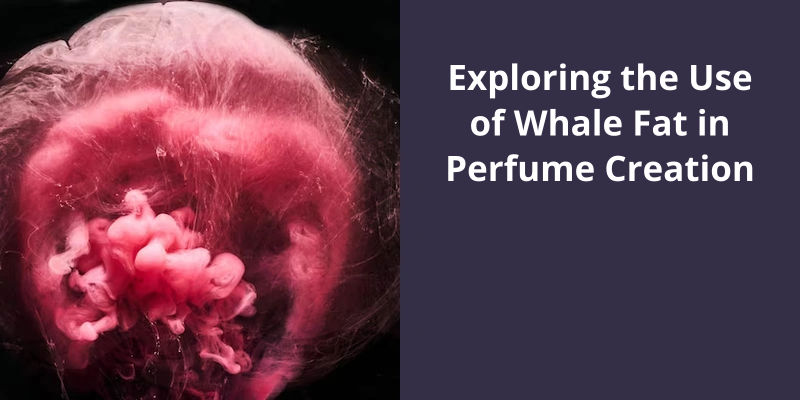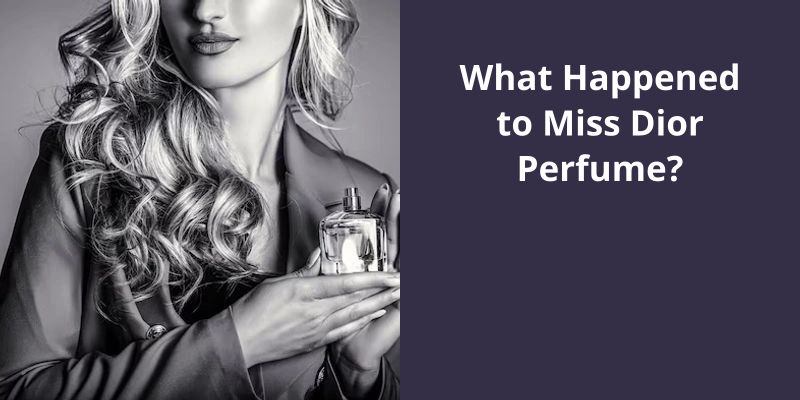Exploring the use of whale fat in perfume creation takes us to its common name, Ambergris, which is not exactly fat but a substance formed in the intestines of sperm whales. Highly valued by perfumers as a fixative to prolong the life of lavish scents, Ambergris is incredibly rare and thus expensive. Over time, this substance develops a sweet, musky scent, which when combined with other ingredients, gives the perfume a lasting, distinctive aroma. Although highly desired in traditional perfume-making, the push for more ethical practices in the industry has led to decreased use of whale-derived products. Synthetic alternatives that mimic the properties of Ambergris are now in common use.

Is There Whale Sperm in Perfume?
The use of animal products in perfumes isn’t a new concept, and whale ambergris is no exception. The substance has been used in perfumes for centuries, and it’s highly sought after by perfumers due to it’s unique scent. Ambergris isn’t actually whale sperm, but rather a waxy substance that develops in the digestive system of sperm whales. The substance is rare, and it’s estimated that only one percent of sperm whales produce it.
The process of extracting ambergris isn’t easy, and it requires a lot of effort and patience. The substance is often found floating on the oceans surface, and it can take years for a piece to wash up on shore. Once it’s obtained, it requires further processing to clean and refine it for use in perfumes. Despite it’s rarity and the difficulty in obtaining it, ambergris is highly valued by perfumers due to it’s unique scent and ability to enhance the fragrance of other ingredients.
Many people are opposed to the use of animal products in cosmetics, and the harvesting of ambergris has raised concerns about the well-being of sperm whales. Some countries have even banned the sale and use of ambergris, opting for synthetic alternatives instead.
However, not all perfumers use ambergris in their fragrances. Many are turning to plant-based and synthetic alternatives, which offer a more ethical and sustainable option. These alternatives not only offer a cruelty-free option, but they can also be more cost-effective and easier to obtain.
While some may assume that lip gloss contains whale sperm, in reality, the product has never included such an ingredient. Rather, a historical component of certain cosmetics derived from a specific part of whales was once used. This substance, called spermaceti, was widely used in cosmetics and ointments due to it’s unique properties.
Does Lip Gloss Have Whale Sperm in It?
However, in modern times, the use of spermaceti in cosmetics has largely been replaced by other ingredients like plant oils, beeswax, and synthetic alternatives. In fact, most lip glosses today contain a mix of ingredients like mineral oil, lanolin, glycerin, and various types of wax. These components work together to create a hydrating and shiny coating on the lips.
While it’s true that some cosmetics still use animal-derived ingredients like beeswax or lanolin, the use of whale sperm or any other animal byproducts is generally considered unethical and unsustainable in the beauty industry. In fact, many cosmetic companies have adopted cruelty-free and vegan policies to better align with the values of their customers.
For example, the International Whaling Commission has banned commercial whaling since 1986, effectively making the use of spermaceti in cosmetics illegal. Furthermore, most cosmetic companies are required to disclose all the ingredients used in their products on the packaging or through online resources.
In short, the idea that lip gloss contains whale sperm is a myth that originated from outdated information about the history of cosmetic ingredients. While cosmetics have historically used various animal and plant-derived materials, the modern industry has largely shifted to more sustainable and ethical alternatives.
Source: What’s lip gloss made of? – The US Sun
However, as public opinion turned against whaling and international laws were put in place to protect these magnificent creatures, the use of sperm whale products has significantly decreased. Yet, there are still some surprising industries that use remnants of these creatures from the past.
What Products Use Whale Sperm?
Spermaceti, obtained from special organs in the sperm whales head, was a highly prized commodity in the cosmetics industry. It was used as a base for perfumes, lotions, and creams, and was considered a luxury ingredient due to it’s rare and expensive nature. Spermaceti candles were also popular in the 18th and 19th centuries due to their clean, bright burning qualities.
Sperm oil, another byproduct of the sperm whale, was used extensively in the industrial revolution as a lubricant for machinery. It’s unique properties made it an ideal choice for everything from steam engines to sewing machines. However, as alternative oils were developed, the use of sperm oil declined, leading to a decrease in demand for sperm whale products overall.
Despite the fact that whale populations have been severely depleted by centuries of hunting, some countries still engage in the practice of whaling. This is a controversial issue, with many conservationists arguing that it’s unethical and unsustainable. While there are some cultural and subsistence reasons for whaling in certain parts of the world, the majority of the industry now serves only commercial purposes.
However, the impact of whaling on marine ecosystems and animal welfare remains a significant concern, and efforts to protect and conserve whale populations continue to be important.
Conclusion
In conclusion, the use of whale fat in the production of perfumes has had a long and controversial history. However, as researchers investigate more eco-friendly alternatives, it’s becoming clear that the use of whale products is no longer necessary. As society continues to move towards more sustainable practices, hopefully we can learn from our past mistakes and work towards a future where the beauty of nature is preserved for all to enjoy.




